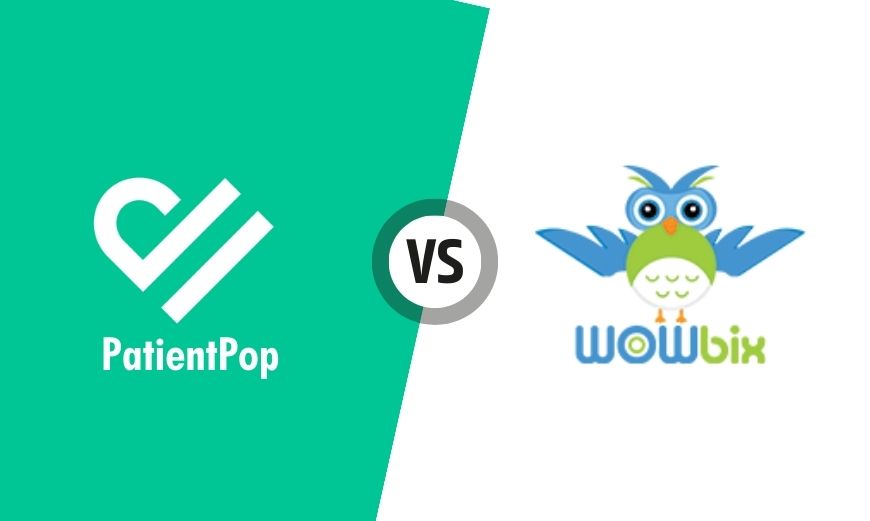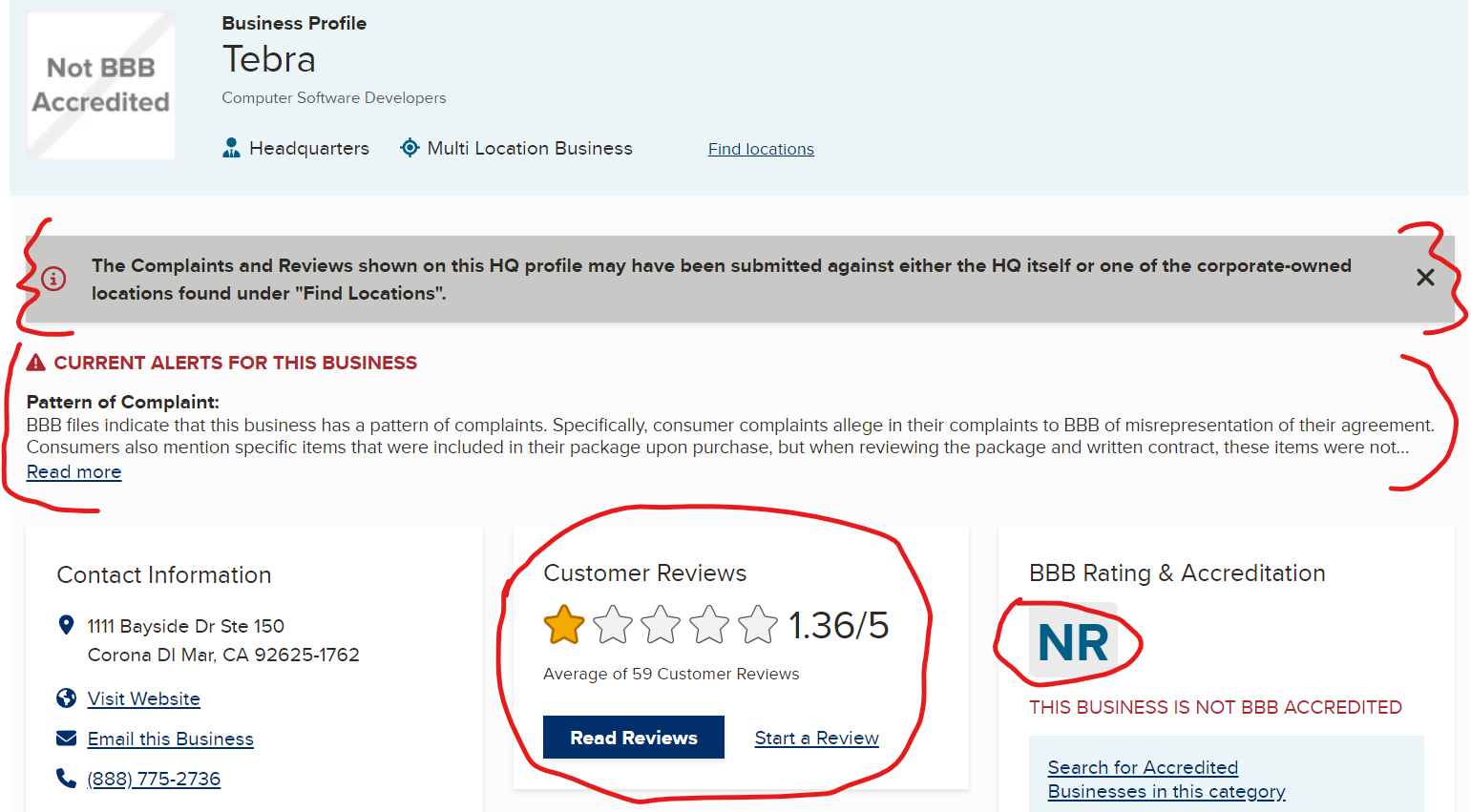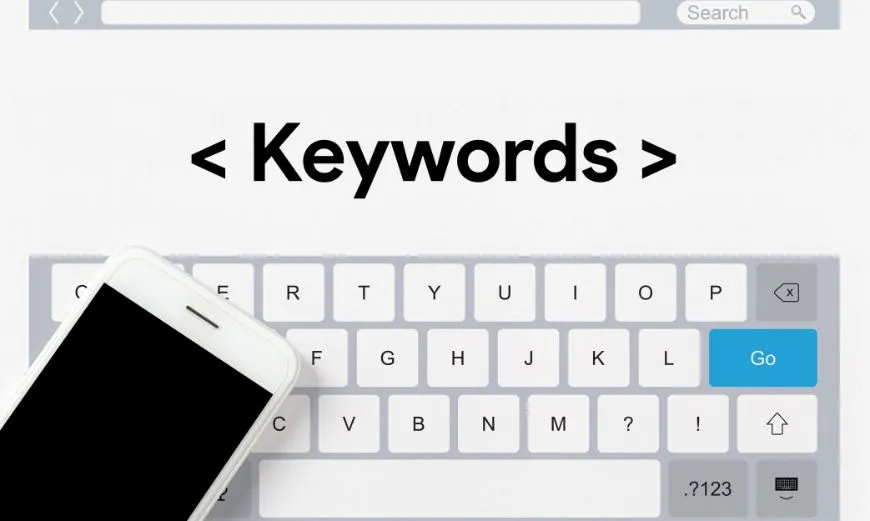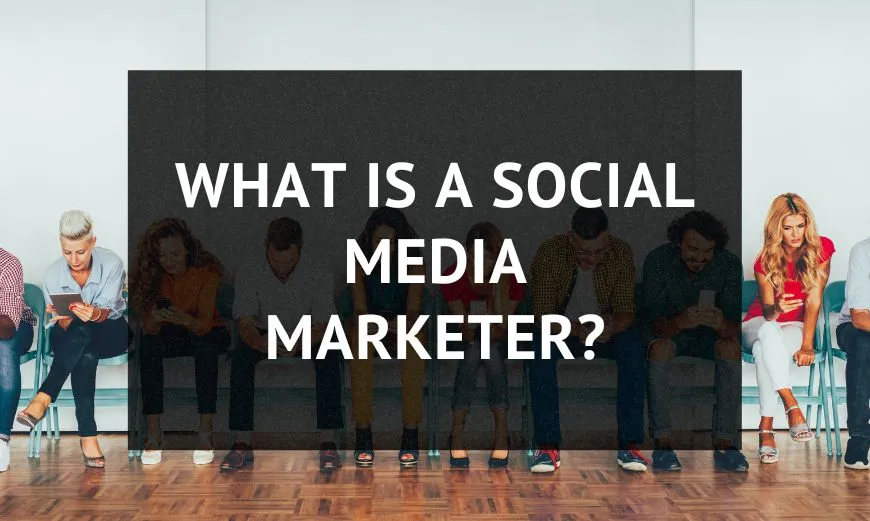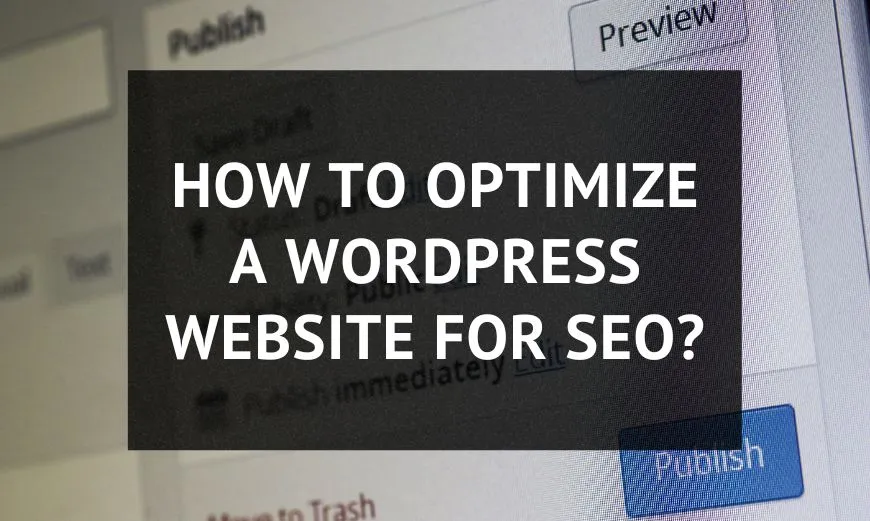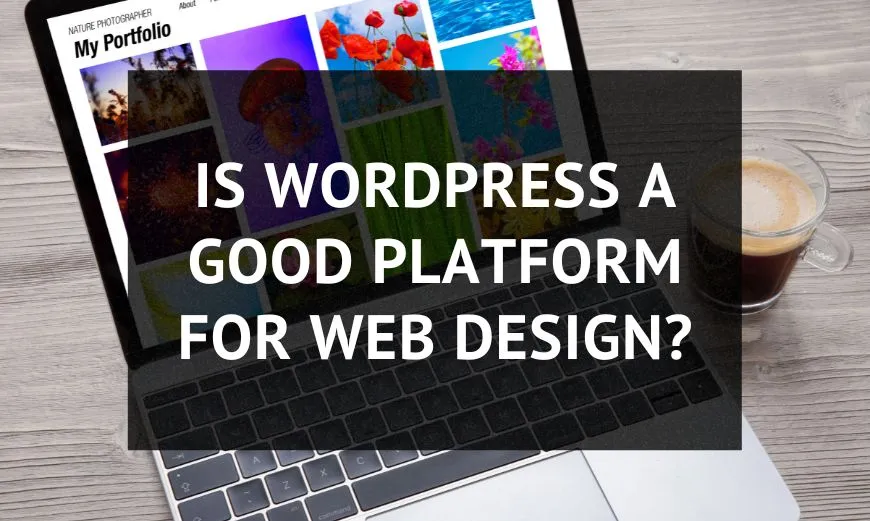PatientPop Alternatives
In the evolving digital landscape of healthcare marketing, selecting the right partner to manage your practice’s online visibility is crucial. One most famous platforms to manage your practice visibility is called PatientPop/Tebra. However, with their pricing and slow customer support people are now looking for better PatientPop alternatives.
If you are the one who got stuck with them or are looking to get enrolled with them it’s very important to read this article before making a decision. With that being said, there are lots of options available. However, one of the best and fastest-growing PatientPop competitors is Wowbix.
Keep reading this article as we dive deep into the comparison between PatientPop/Tebra and WOWbix, focusing on features, pricing, customer service, and overall value to healthcare providers.
Understanding PatientPop
According to the PatientPop Crunchbase listing, in its early days, they raised millions of dollars. PatientPop funding on series C went to $50 million. This grabbed some attention and with millions of dollars in marketing budget they scaled their teams to enroll all the medical practices all around the USA. Initially, PatientPop promised to enhance the patient journey, from discovery to post-appointment follow-up, through its automated system.
In easy words what they were offering was a basic website with an appointment form on the slider along with SEO optimization. However, in a few months, many practices identified limitations in their offerings, particularly regarding PatientPop customer service, pricing, and customization.
Moreover, their website designs were all similar in designs. They have been using only 1 template for all types of practices. Recently PatientPop merged with Kareo and transformed into Tebra. They made hype about it, which we believe was another publicity stunt by calling it an improved service. However, to date, Wowbix has reported they are getting clients migrating to them almost every day with lots of complaints. Tebra pricing has increased from what they were charging before and the Tebra customer service is almost dead. From our recent reports, they take around 2 weeks to respond to basic tickets and requests. The worst thing, once a patient stops paying them they shut down their website completely.
The Emergence of Wowbix in Healthcare Marketing
Wowbix was founded in 2015 before PatientPop by the founder of Microwize, an EMR company. As a full-service digital marketing company, Wowbix was focused on providing services to all types of businesses instead of healthcare. But in the last few years due to the Microwize current accounts, they had to slightly move towards the Medical industry. Wowbix without funding and a small team has created 100+ medical websites so far that are all 100% customized according to each practice. Wowbix pricing is 40% cheaper than what Tebra is charging right now. They don’t shut down your website and they are offering 24/7 customer service to their clients.
Moreover, Wowbix recently partnered with Vosita—a doctor’s directory in the USA similar to ZocDoc. WOWbix is positioning itself as a top competitor to PatientPop. Custom SEO strategies dedicated to each customer are the most important things their customers love them for. In 2024, they also launched a partnership deal of 100% free lifetime listing on Vosita if you are a Wowbix customer. Which alone costs $40/appointment or $2,000/lifetime listing.
Watch the Video of the Best PatientPop Alternatives
So should I go with PatientPop or PatientPop Alternatives for my practice?
There are so many reasons why you should be looking at PatientPop Alternatives that we are going to discuss and we are sure you will agree to each of these points. Let’s dive deep into the differences between both agencies and try to find out which one would be the best suited for you!
Pricing & Packages
One of the stark contrasts between Wowbix and PatientPop lies in their pricing models. So how much does PatientPop cost?
PatientPop pricing back then was starting at $700 per month for a basic website back in 2020. But! The Tebra cost 25% more than what they were charging back then. The price according to current reports has increased up to $900 for very basic and small practices and up to $4000 for medium-sized and larger practices. This is a price point that may not be accessible for most healthcare practices, especially small ones.
Wowbix costs 40% less than PatientPop and Tebra. Wowbix’s plans start from $400 to $600 per month for customized web design, SEO, and reputation management. Depending on the client’s specific needs and size. They also offer Social media marketing, google review management, and local SEO management and have their higher packages starting from $900 only for full-service digital marketing. This makes them an attractive option for practices seeking affordability without compromising quality.
Website Customization and Ownership
A common critique of PatientPop is its one-size-fits-all approach to website design, using a single theme for all its clients. This lack of customization can dilute a practice’s unique brand identity. Wowbix challenges this norm by offering bespoke website designs, ensuring that each healthcare provider’s online presence is distinct and reflective of their brand.
Moreover, Wowbix clients retain full ownership of their websites. If they decide to end the contract with Wowbix they are free to host their website anywhere they want. However, the Tebra Terms of Service don’t allow that. They will shut down your website and delete it if you end the contract or stop paying them for any reason.
SEO, Local SEO & Listing Management
SEO is the backbone of digital visibility. Practices transitioning from PatientPop to Wowbix have cited the former’s inadequate SEO strategies. Technical SEO on their websites is terrible scoring around 85% on SEMRush audit reports. Moreover, Wowbix noticed that they have missing listings and their clients have very bad scores on local SEO listings. It’s hard to tell if Tebra is doing anything to improve it but so far what we have noticed is terrible. Reddit is full of bad PatientPop reviews with doctors complaining about them. Another good source for Tebra reviews is this Trust Radius listing.
Not only that, but Tebra’s status is also at risk.
According to a recent BBB report a legal complaint was filed against them. The reason for this complaint is the reports and recent verified reviews shared on their profile by medical practices. Reviews mention Tebra Scam and identify all the issues described here.
PatientPop/Tebra Customer Support
The importance of responsive and personalized customer service cannot be overstated in the fast-paced healthcare industry. PatientPop’s reported response time was around seven days but with Tebra migration now it is been reported to be more than 40 days from some of their customers. However, Wowbix is committed to prompt and efficient support by offering 24/7 customer service. This dedication to customer satisfaction is a cornerstone of Wowbix’s value proposition, ensuring that practices receive the assistance they need when they need it.
Beyond Marketing
Wowbix’s partnership with Microwize and Vosita enriches its service offering, providing healthcare practices with more than just marketing solutions. These collaborations enhance practice management and patient booking capabilities, offering an integrated approach to digital transformation in healthcare.
Moreover, you get a free lifetime listing on Vosita and free appointments for life if you’re a WOWbix customer.
Making the Switch: A Seamless Transition
For healthcare practices considering a switch from PatientPop to Wowbix, the transition promises not only cost savings but also a significant upgrade in service quality and customization. Wowbix’s flexible and tailored approach ensures that each practice’s unique needs are met, from website design to SEO and beyond.
Conclusion: Choosing the Right Partner for Your Practice
Is patientpop worth it? The choice between Tebra and Wowbix boils down to what matters most to your practice. There is a huge difference between website customization as we previously discussed. With Tebra you can’t customize your website the way you want. Tebra Dashboard will be provided to you where you will only be able to track a few reports with very limited functionality. Even Tebra patient portal and provider login if you get trouble with it you will have to wait 7-10 days for them to respond.
Now if you’re seeking a Tebra / PatientPop alternative that offers a personalized approach, transparent pricing with no hidden fees, and comprehensive digital marketing solutions. Wowbix is the way to go with their 24/7 customer support guarantee written in their contract.
With this comparison, we aimed to provide medical practices with a clear understanding of What is Tebra, PatientPop, and Wowbix and what these companies offer, guiding you toward making an informed decision that best suits marketing & patient engagement goals. With a strategic focus on SEO optimization, this article addresses the key concerns and considerations navigating the digital marketing landscape.
Positioning Wowbix as a viable and superior alternative to PatientPop.
Looking to connect with Wowbix?
Call our 24/7 customer service at +1 646-661-6797. Or reach out through our Contact Us form. Or just connect us on the chat on our website at the bottom right! We’re here to serve.
ChatGPT for SEO
ChatGPT, powered by OpenAI’s advanced language model, is not just a conversational tool; it has the potential to revolutionize the field of Search Engine Optimization (SEO). In this comprehensive guide, we’ll explore how ChatGPT can be leveraged for SEO strategies, transforming content creation, optimization, and overall search engine visibility.
The Power of Conversational AI in SEO
Traditional SEO strategies often involve keyword research, content optimization, and backlink building. With the emergence of conversational AI like ChatGPT, a new dimension is added to the SEO landscape. ChatGPT can generate human-like text, understand user queries, and create content that resonates with both search engines and human readers.
Content Creation with ChatGPT
ChatGPT can be a game-changer in content creation for SEO. Its ability to generate coherent and contextually relevant text makes it a valuable tool for producing high-quality blog posts, articles, and website content. Content created with ChatGPT can be optimized for target keywords, ensuring a seamless blend of creativity and SEO effectiveness.
Optimizing Meta Content and Descriptions
Writing compelling meta titles and descriptions is crucial for click-through rates and search engine rankings. ChatGPT can assist in crafting engaging meta content that not only includes relevant keywords but also entices users to click. The AI’s natural language processing capabilities contribute to creating meta content that aligns with search intent and increases the likelihood of attracting organic traffic.
Generating SEO-Friendly Blog Post Ideas
ChatGPT can be utilized to brainstorm and generate SEO-friendly blog post ideas. By inputting relevant keywords and topics, the AI can provide a range of suggestions, ensuring your content aligns with user interests and current search trends. This streamlines the content ideation process, helping you consistently produce valuable and relevant material for your audience.
Enhancing User Engagement with ChatBots
Integrating ChatGPT into your website as a chatbot can enhance user engagement. Chatbots powered by ChatGPT can provide instant responses to user queries, offer personalized recommendations, and guide visitors through your site. This not only improves user experience but also increases the time users spend on your site, a factor considered by search engines when determining rankings.
Automated Social Media Content Creation
Social media is an integral part of online presence, and ChatGPT can automate the creation of social media content. From crafting engaging captions to generating tweet ideas, ChatGPT streamlines the social media content creation process. Consistent and relevant social media updates contribute to a positive online presence and can indirectly impact SEO by increasing brand visibility.
Ensuring Content Relevance and Coherence
One of ChatGPT’s strengths is its ability to maintain context and coherence in text generation. This ensures that the content created remains relevant to the topic at hand. For SEO, this means producing content that not only includes target keywords but also provides valuable information to users, aligning with search engine algorithms that prioritize user satisfaction.
Addressing User Queries and Intent
Understanding user queries and intent is crucial for SEO success. ChatGPT can analyze user questions and generate responses that directly address their queries. This aligns with the trend of search engines prioritizing content that fulfills user intent, ultimately improving the chances of your content ranking higher in search results.
Continuous Learning and Adaptation
ChatGPT’s ability to continuously learn and adapt to new information ensures that your SEO strategies stay up-to-date. As it processes and analyzes data, it can incorporate emerging trends, industry updates, and changes in search engine algorithms. This adaptability is invaluable for staying competitive in the dynamic field of SEO.
Conclusion: ChatGPT – A Transformative Force in SEO
ChatGPT’s capabilities extend beyond casual conversation, making it a transformative force in the realm of SEO. From content creation to user engagement, this AI tool can significantly impact your website’s search engine visibility. Incorporating ChatGPT into your SEO strategies can revolutionize the way you approach content, user experience, and overall online presence, propelling your website to new heights in the digital landscape.
Quick Tips for Increasing Website Page Speed
Website page speed is a crucial factor influencing user satisfaction and search engine rankings. Slow-loading pages can lead to high bounce rates and negatively impact your online presence. In this guide, we’ll explore quick and effective tips to increase your website’s page speed, enhancing both user experience and SEO performance.
1. Optimize Image Sizes
Large images can significantly slow down your website. Compress and resize images without compromising quality. Utilize image formats like WebP and implement lazy loading to load images only when they come into the user’s viewport.
2. Minimize HTTP Requests
Reducing the number of elements on your web pages, such as scripts, stylesheets, and images, minimizes the number of HTTP requests. Combine multiple files when possible and leverage browser caching to speed up subsequent visits.
3. Enable Browser Caching
Set up browser caching to store static files on visitors’ devices. This reduces the need to re-download resources on subsequent visits, resulting in faster loading times. Specify appropriate expiration dates for different types of content.
4. Optimize Code
Clean up and optimize your website’s code by removing unnecessary spaces, comments, and line breaks. Use CSS and JavaScript minification to reduce file sizes and improve parsing speed. Efficient code contributes to faster page rendering.
5. Utilize Content Delivery Networks (CDNs)
Implementing a Content Delivery Network distributes your website’s static content across multiple servers worldwide. Users can access content from the server closest to them, reducing latency and improving page load times globally.
6. Prioritize Critical Rendering Path
Optimize the critical rendering path by loading essential above-the-fold content first. This ensures users quickly see relevant information while other elements load in the background. Prioritizing above-the-fold content enhances perceived page speed.
7. Minimize Server Response Time
Optimize server performance by upgrading hosting plans, minimizing server-side scripts, and utilizing caching mechanisms. A faster server response time contributes to quicker page loading and improved user experience.
8. Implement Asynchronous Loading
Utilize asynchronous loading for non-essential scripts to prevent them from blocking the rendering of the page. This allows the page to load smoothly, and scripts can load in the background without hindering user experience.
9. Evaluate and Remove Unused Plugins
Regularly assess your website’s plugins and remove any that are unnecessary or unused. Each plugin adds additional code and potential performance overhead. Keeping only essential plugins streamlines your website and improves page speed.
10. Opt for a Reliable Hosting Provider
Choose a reputable hosting provider with reliable server infrastructure. A hosting service with high uptime, fast server response times, and scalable resources ensures a stable and fast website performance.
11. Optimize External Embedded Media
If your website includes external embedded media, such as videos or widgets, optimize their loading times. Consider using lazy loading for videos and ensure that embedded media doesn’t unnecessarily delay the rendering of your pages.
12. Monitor and Analyze Performance Regularly
Use performance monitoring tools to regularly assess your website’s speed. Analyze key metrics such as page load time, Time to First Byte (TTFB), and user interactions. Stay informed about your website’s performance and make adjustments as needed.
Conclusion: Accelerate Your Website’s Success
By implementing these quick tips for increasing website page speed, you can significantly enhance user experience and positively impact your SEO rankings. A faster website not only keeps visitors engaged but also signals to search engines that your content is valuable and deserves higher visibility. Prioritize optimizing your website’s speed to accelerate its success in the competitive online landscape.
How to Rank Your Google Search Profile in Multiple Towns
In the competitive digital landscape, expanding your online presence across multiple towns is a strategic move to reach a broader audience and grow your business. Achieving a prominent Google search profile in multiple towns requires a well-thought-out SEO strategy. In this comprehensive guide, we’ll explore actionable steps to enhance your visibility across various locations.
Understanding the Importance of Local SEO
Local SEO is the key to conquering multiple towns in search results. Google prioritizes local relevance, making it crucial to optimize your online presence for each specific location. Start by claiming and optimizing your Google My Business (GMB) listings for each town you target. Provide accurate business information, including your address, phone number, and business hours.
Creating Location-Specific Content
Crafting content tailored to each town is a powerful way to resonate with local audiences. Develop blog posts, landing pages, and other website content that address the unique needs and interests of each community. Mention local landmarks, events, and businesses to establish a connection and showcase your commitment to serving each area.
Optimizing On-Page SEO Elements
Optimize on-page elements, including meta titles, meta descriptions, and header tags, with location-specific keywords. Conduct thorough keyword research for each town, considering local phrases that potential customers might use in their searches. Incorporate these keywords naturally into your content to signal relevance to search engines.
Building Local Citations
Local citations play a crucial role in local SEO. Ensure that your business information is consistent across online directories, review sites, and social media platforms. The more accurate and consistent your citations are, the higher your chances of ranking prominently in local search results. Leverage tools to discover and manage your citations efficiently.
Encouraging Customer Reviews
Positive customer reviews not only build trust but also impact your local search rankings. Encourage satisfied customers to leave reviews on your GMB listings and other review platforms. Respond to reviews promptly, whether they are positive or negative, to demonstrate your commitment to customer satisfaction. Regularly monitor and manage your online reputation.
Implementing a Mobile-Friendly Design
Many local searches happen on mobile devices, emphasizing the importance of a mobile-friendly website. Ensure that your website is responsive and provides an optimal user experience on various devices. Google considers mobile-friendliness as a ranking factor, so investing in a responsive design contributes to your overall SEO strategy.
Utilizing Local Structured Data Markup
Structured data markup helps search engines understand the content on your website. Implement local structured data markup to provide additional context about your business, such as operating hours, addresses, and reviews. This markup enhances the visibility of your business information in search results and increases the likelihood of attracting local customers.
Engaging in Local Link Building
Local link-building is a powerful way to boost your authority in specific areas. Seek opportunities to collaborate with local businesses, sponsor local events, or participate in community initiatives. Building relevant, local backlinks signals to search engines that your business is a valuable and trusted resource within the community.
Monitoring and Analyzing Performance
Regularly monitor the performance of your SEO efforts in each town. Utilize analytics tools to track keyword rankings, website traffic, and user engagement. Adjust your strategy based on the insights gained from performance data. Stay informed about local search trends and algorithm updates to adapt your approach accordingly.
Conclusion: Dominating Multiple Towns in Google Search
Ranking your Google search profile in multiple towns requires a strategic and localized approach to SEO. By understanding the unique dynamics of each community, optimizing your online presence for local relevance, and consistently refining your strategy based on performance data, you can dominate search results across various locations. Stay committed to providing valuable, location-specific content, building strong local connections, and adapting to the ever-evolving landscape of local SEO.
Average Page Load Time & How Can You Improve Yours
The Average Page Load Time of your website can significantly impact user experience and search engine rankings. In this comprehensive guide, we’ll delve into the importance of page load time, factors affecting it, and actionable strategies to improve your website’s speed for better performance and user satisfaction.
The Significance of Average Page Load Time
Page load time is a critical factor influencing user satisfaction and search engine rankings. Slow-loading pages can lead to higher bounce rates, decreased user engagement, and a negative impact on conversions. Search engines, including Google, consider page speed as a ranking factor, making it crucial for both user experience and SEO success.
Factors Affecting Page Load Time
Several factors contribute to the overall page load time of a website. These include server response time, large image and media files, excessive HTTP requests, unoptimized code, and the use of external scripts. Identifying and addressing these factors is essential for optimizing page load time and delivering a seamless user experience.
Effective Strategies to Improve Page Load Time
1. **Optimize Images:** Compress and resize images to reduce file sizes without compromising quality. Use modern image formats and implement lazy loading to load images only when they come into the user’s viewport.
2. **Minimize HTTP Requests:** Reduce the number of elements on your web pages, such as scripts, stylesheets, and images, to minimize the number of HTTP requests. Combine multiple files when possible and utilize browser caching to speed up subsequent visits.
3. **Optimize Code:** Clean up and optimize your website’s code by removing unnecessary spaces, comments, and line breaks. Use CSS and JavaScript minification to reduce file sizes and improve parsing speed.
4. **Utilize Browser Caching:** Set up browser caching to store static files on visitors’ devices, reducing the need to re-download resources on subsequent visits. Specify appropriate expiration dates for different types of content.
5. **Improve Server Response Time:** Optimize server performance by upgrading hosting plans, implementing content delivery networks (CDNs), and minimizing the use of server-side scripts. Choose a reliable hosting provider with fast server response times.
6. **Prioritize Above-the-Fold Content:** Load critical above-the-fold content first to provide users with a faster-perceived page load time. Delay loading less essential elements until after the initial render.
Testing and Monitoring Page Load Time
Regularly test and monitor your website’s page load time using tools like Google PageSpeed Insights, GTmetrix, or Pingdom. These tools provide insights into performance metrics, highlight areas for improvement, and offer suggestions to optimize your website further. Consistent monitoring ensures that your site maintains optimal speed over time.
Conclusion: Elevate User Experience with Faster Load Times
Understanding the importance of Average Page Load Time is crucial for website owners and marketers. By implementing effective strategies to optimize page speed, you not only enhance user experience but also improve your website’s search engine rankings. Stay proactive in monitoring and addressing factors affecting page load time to ensure your website delivers optimal performance and remains competitive in the digital landscape.
Why WOWbix is the Top SEO Company in Paramus NJ
In the buzzing heart of Paramus, NJ, where local businesses vie for attention in a lively marketplace, getting noticed online isn’t just a plus – it’s a game-changer. That’s where WOWbix Marketing steps in, proudly claiming the title of Paramus’s top SEO company.
But what makes us the go-to choice for businesses in Paramus? Let’s break it down.
Why SEO is a Big Deal in Paramus, NJ:
Getting Local Right in Paramus NJ
In a town known for its diverse offerings and lively commercial spirit, local businesses face a unique set of challenges. The competition is real, and more and more consumers are turning to online searches to find their next favourite local spot. This is where SEO comes in – not just as a tool but as a compass guiding businesses through the digital maze, ensuring they don’t just survive but thrive in Paramus.
Crafting SEO Magic:
An Art and Science That Works for You
WOWbix brings a unique blend of art and science to the SEO game. We’re not just about tweaking a few things here and there; we’re crafting strategies that resonate with the local flavor of Paramus.
Local SEO Know-How: We get Paramus. Our strategies aren’t generic; they’re finely tuned to what the local community is actively searching for.
Keyword Magic: Ever wondered how businesses end up on the first page of Google? It’s a bit of magic we call keyword optimization. Think “SEO Company Paramus” or “Paramus SEO agency“.
Real Results in Paramus That Speak Volumes:
Success Stories From Your Neighbors
WOWbix isn’t just about promises; it’s about proven results. Dive into case studies and testimonials that showcase how our SEO strategies have propelled Paramus businesses to new heights.
Case Studies: Real businesses, real results. Discover how local visibility, organic traffic, and actual profits soared for businesses with WOWbix.
What Clients Say: Hear directly from Paramus businesses that have seen the benefits of our tailored SEO services. It’s not just about rankings; it’s about building lasting relationships.
Understanding Paramus Like a Local:
Navigating the Local Flavor
WOWbix’s success in Paramus is deeply rooted in understanding the local landscape. We’re not here to apply cookie-cutter solutions; we’re here to craft strategies that resonate with Paramus residents.
Tailored for Paramus: We know Paramus isn’t like anywhere else. Our SEO strategies are crafted to fit the unique characteristics of this vibrant town.
Clear Communication All the Way:
We’re in This Together
In an industry sometimes clouded by complexity, WOWbix stands out for clear communication. We’re not leaving you in the dark – we want you to be an active part of your SEO journey.
Updates on Your Terms: Wondering how your SEO campaign is doing? We keep you in the loop. It’s not just about rankings; it’s about understanding the journey.
Certifications That Mean Business:
Credibility You Can Trust
WOWbix proudly showcases its certifications and industry recognitions, establishing itself not just as a local SEO provider but as a credible authority in digital marketing.
Expertise You Can Count On: Our team is certified, showcasing our expertise in the ever-evolving world of SEO. Paramus businesses can trust their digital strategies are in capable hands.
In Conclusion:
In the world of SEO in Paramus, WOWbix isn’t just a company – it’s a partner invested in the success of local businesses. It’s the synergy of local understanding, clear communication, and proven results that positions WOWbix as Paramus’s top SEO company.
As businesses in Paramus navigate the digital landscape, WOWbix stands as the guiding force that transforms online visibility into tangible success. It’s not just about being seen; it’s about being the unmistakable choice for consumers actively searching for products and services in Paramus.
Choosing WOWbix as your SEO partner means investing in a collaborative journey toward digital excellence in the heart of Paramus, NJ. Let’s make your business the talk of the town – not just on the streets of Paramus but across the digital landscape too.
Best Way to Do Keyword Research for SEO
Why Keyword Research Matters
Before diving into the nitty-gritty of keyword research, it’s essential to grasp its significance. Keywords are the building blocks that connect your content with users actively seeking information, products, or services. An effective keyword strategy not only enhances your site’s visibility but also ensures you attract the right audience.
Step 1: Understanding Your Audience
Effective keyword research begins with a deep understanding of your target audience. What are their needs, preferences, and pain points? Crafting content that resonates with your audience involves identifying the language they use when searching for information online.
Step 2: Compile a Seed List
Start your keyword journey by compiling a seed list of relevant terms related to your niche. This can include broad industry terms, product names, and specific services you offer. Use your seed list as a foundation to build a comprehensive keyword strategy.
Step 3: Leverage Keyword Research Tools
Harness the power of keyword research tools to expand and refine your list. Platforms like Google Keyword Planner, SEMrush, and Ahrefs provide valuable insights into search volume, competition, and related keywords. Utilize these tools to identify high-performing keywords and long-tail variations.
Step 4: Analyze Competitor Keywords
Spying on your competitors can offer a wealth of keyword opportunities. Identify the keywords they are targeting and evaluate their performance. This not only helps you discover potentially untapped keywords but also allows you to refine your strategy based on what is already working in your industry.
Step 5: Focus on Long-Tail Keywords
While broad keywords are essential, long-tail keywords can be the secret sauce for success. These are specific, often conversational phrases that cater to users with a clear intent. Incorporate long-tail keywords into your content to capture niche audiences actively searching for detailed information.
Step 6: Organize and Prioritize Keywords
With a robust list of keywords at your disposal, it’s crucial to organize and prioritize them based on relevance and search volume. Group similar keywords together to create themed clusters. This not only aids in content organization but also ensures a more natural integration of keywords into your website.
Step 7: Monitor and Adapt
Keyword research is not a one-time task; it’s an ongoing process. Regularly monitor the performance of your keywords using analytics tools. Keep an eye on industry trends, user behavior, and algorithm updates. Adapt your keyword strategy accordingly to stay ahead in the ever-changing digital landscape.
Conclusion: Mastering the Art of Keyword Research
In the dynamic world of SEO, mastering the art of keyword research is paramount. It is the key to unlocking your website’s full potential and ensuring it reaches the right audience. By understanding your audience, leveraging powerful tools, analyzing competitors, and focusing on both broad and long-tail keywords, you can craft a keyword strategy that propels your site to the top of search engine results.
Harness the power of HTML and these actionable insights to elevate your SEO game. As you embark on your keyword research journey, remember: it’s not just about ranking high; it’s about connecting with your audience through the language they speak. Start optimizing, start dominating the digital landscape.
What is a social media marketer?
In the digital age, the role of a social media marketer has become increasingly vital for businesses seeking to establish a robust online presence. This article delves into what a social media marketer does, the skills they need, and how they contribute to a brand’s success. We’ll conclude with a note on how Wowbixmarketing.com can assist in elevating your social media marketing strategy.
Defining a Social Media Marketer
A social media marketer is a professional skilled in creating and executing marketing strategies across social media platforms. Their goal is to build a brand’s online presence, engage with the audience, and ultimately drive sales or conversions.
Key Responsibilities
- Content Creation and Curation: Creating compelling content tailored to different social media platforms. For instance, a social media marketer for a fashion brand might develop visually appealing posts for Instagram and engaging stories for Facebook.
- Strategy Development: Crafting a social media strategy that aligns with the brand’s goals. This involves understanding the target audience, choosing the right platforms, and setting measurable objectives.
- Community Engagement: Interacting with followers, responding to comments and messages, and fostering a sense of community. A skilled marketer not only posts content but also engages with the audience to build relationships.
- Analytics and Reporting: Using analytics tools to track the performance of social media campaigns and adjusting strategies based on data-driven insights.
Essential Skills for a Social Media Marketer
- Creativity and Innovation: The ability to produce original and engaging content that stands out in a crowded digital space.
- Strategic Planning: Understanding how to plan and execute campaigns that resonate with the target audience and meet business objectives.
- Communication and Interpersonal Skills: Effective communication is key in engaging with the audience and representing the brand voice.
- Analytical Skills: Analyzing data to understand campaign performance and make informed decisions.
The Impact of Social Media Marketing
Social media marketing is not just about posting content; it’s about creating meaningful interactions that lead to brand loyalty and conversions. A good social media marketer can transform a brand’s online presence by increasing brand awareness and reach, driving traffic to the brand’s website or physical store, enhancing customer engagement and loyalty, and boosting sales through targeted campaigns.
Challenges Faced by Social Media Marketers
- Keeping up with constantly changing algorithms and trends.
- Managing multiple platforms and ensuring consistent brand messaging.
- Dealing with online reputation management and crises.
Real-World Examples
A social media marketer for a local café might create a campaign featuring customer experiences, using hashtags to encourage user-generated content. A tech company, might focus on LinkedIn and Twitter to share industry insights and company news.
The Evolving Landscape of Social Media Marketing
As social media platforms evolve, so does the role of the social media marketer. They must stay abreast of the latest trends, like the rise of video content on platforms like TikTok and Instagram Reels.
Conclusion
The role of a social media marketer is multifaceted and ever-evolving. They are key players in shaping a brand’s digital narrative and engaging with the audience in meaningful ways. If your business is looking to harness the power of social media marketing, Wowbixmarketing.com offers expert social media marketing services tailored to your brand’s needs. Let’s collaborate to bring your social media strategy to life and connect with your audience like never before.
How to optimize a WordPress site for SEO?
Optimizing your WordPress site for search engine optimization (SEO) is crucial for increasing its visibility and attracting more traffic. This guide delves into effective strategies for SEO optimization on WordPress, presenting practical steps and examples to enhance your site’s performance. The article concludes with an invitation to consult Wowbixmarketing.com for further expert SEO assistance.
Understanding the Basics of SEO in WordPress
SEO in WordPress is about making your site more attractive and accessible to search engines. This involves optimizing various elements like content, structure, and metadata to improve rankings and user experience.
Content is King: Quality and Relevance
The foundation of good SEO is high-quality, relevant content. Your content should provide value to your readers and be centered around keywords relevant to your target audience. For example, a health blog should produce well-researched, informative articles on health and wellness topics.
Utilizing WordPress SEO Plugins
WordPress offers a variety of SEO plugins like Yoast SEO and All in One SEO Pack. These tools help you optimize your content, generate sitemaps, and improve meta descriptions and titles. A local bakery can use these plugins to ensure their site is fully optimized for search terms like “fresh bakery in [city].”
Optimizing Your Site’s Structure
A well-structured site with clear navigation helps search engines understand and index your content effectively. This includes using a logical hierarchy for your pages and posts and creating a comprehensive sitemap. An e-commerce store, for instance, should organize products into categories and subcategories for better clarity.
Mobile Responsiveness and User Experience
With mobile internet usage surpassing desktop, having a mobile-responsive WordPress site is essential for SEO. A site that offers a seamless experience across all devices will rank higher in search engine results. Consider a travel blog that ensures their site is easily navigable and looks great on both desktop and mobile devices.
Speed Optimization: Keeping Your Site Fast
Site speed is a crucial SEO factor. Slow-loading sites can negatively impact user experience and search engine rankings. Regularly optimizing images, using caching plugins, and choosing a reliable hosting provider are ways to improve site speed. A photography website, for example, should optimize image sizes to ensure quick loading without compromising on quality.
Leveraging Social Media Integration
Integrating social media can boost your SEO efforts by driving more traffic to your site. Embedding social media feeds and sharing buttons makes it easier for visitors to share your content. A fashion retailer can enhance their SEO by making their blog posts easily shareable on platforms like Instagram and Pinterest.
Regular Updates and Maintenance
Keeping your WordPress site and plugins updated ensures optimal performance and security. Regular maintenance, including checking for broken links and updating content, is also vital for SEO. A tech news website must consistently update its articles to keep them relevant and accurate.
Securing Your WordPress Site
Website security affects SEO rankings. Implementing security measures like SSL certificates and regular backups helps protect your site from malicious activities and increases trust with search engines. An online store should prioritize securing customer data and transactions to maintain credibility.
Conclusion
Optimizing your WordPress site for SEO is a continuous process that requires attention to detail and an understanding of SEO best practices. By following these guidelines, you can significantly improve your site’s search engine visibility. If you need specialized assistance in optimizing your WordPress site for SEO, Wowbixmarketing.com offers expert SEO services to help elevate your online presence. Partner with us to harness the full potential of your WordPress site in the digital landscape.
Is WordPress a good platform for Web Design?
WordPress stands as a towering figure in the world of web design, but is it the right platform for your specific needs? This article explores the various facets of WordPress as a web design platform, illustrating its features, benefits, and potential drawbacks through examples, and concludes with a subtle invitation to consult with Wowbixmarketing.com for tailored web solutions.
What is WordPress?
WordPress began as a simple blogging platform but has evolved into a comprehensive content management system (CMS). It’s known for its flexibility, user-friendliness, and extensive range of themes and plugins. Whether for a small personal blog or a large corporate website, WordPress offers a scalable solution.
User-Friendly Interface
One of WordPress’s most appealing features is its intuitive and user-friendly interface. It’s designed for non-technical users, allowing them to manage and update their websites easily. For instance, a local restaurant can regularly update its menu and specials without needing in-depth technical knowledge.
Customization and Flexibility
WordPress is renowned for its customization options. With thousands of themes and plugins, it can cater to almost any design and functionality requirement. A startup can use WordPress to create a unique and professional-looking website without the hefty cost typically associated with custom web development.
SEO-Friendly
WordPress is built with SEO in mind. Its code is clean and simple, making it easier for search engines to read and index a site’s content. Plus, there are numerous SEO plugins available to further optimize your website. A blog focusing on organic reach can leverage WordPress’s SEO capabilities to improve its visibility in search engine results.
Large Community and Support
The platform boasts a vast and active community. This community provides an extensive support system, including forums, tutorials, and guides, which is invaluable for troubleshooting and learning. A small business owner encountering an issue with their WordPress site can often find solutions through community support or professional WordPress developers.
Regular Updates and Security
WordPress is regularly updated for improved security and functionality. These updates help protect websites from vulnerabilities and ensure they stay up to date with the latest web standards. However, it’s crucial to manage these updates properly to ensure they don’t disrupt the site’s functionality.
Scalability and Performance
WordPress sites can grow with your business. It’s capable of handling websites with thousands of pages and high visitor traffic without compromising performance. A growing e-commerce site, for instance, can expand its product range and customer base without needing to migrate to a different platform.
Potential Drawbacks
While WordPress is versatile, it’s not without its challenges. Customizing themes and plugins can require some technical skills, and not all plugins are developed with the same quality and security standards. Also, poorly optimized or overburdened WordPress sites can suffer from slow loading times.
Is WordPress Right for You?
Deciding if WordPress is suitable for your web design project depends on your specific needs, skills, and resources. It’s a powerful tool for those who need a flexible, SEO-friendly, and scalable website solution. However, considering its potential complexities, seeking professional help might be a wise decision for some businesses.
Conclusion
WordPress offers a compelling mix of usability, customization, and scalability, making it a popular choice for web design. Whether you’re a small business, a blogger, or a large enterprise, WordPress has the tools to meet your needs. If you’re considering WordPress for your next web project and need expert advice or assistance, Wowbixmarketing.com is here to help. We specialize in creating customized WordPress solutions that align with your business goals. Let’s collaborate to build a website that not only looks great but also performs excellently.

